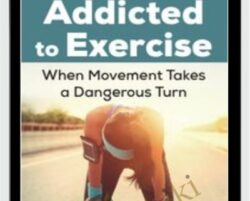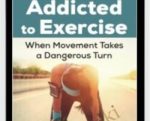Whether on its own or in collision with another mental health problem, pathological exercise is a serious and debilitating condition. Similar to substance use disorder, compulsive exercise can serve as a maladaptive coping strategy in response to increased arousal, hypervigilance, cognitive ruminations, and other trauma-related symptoms. Yet, in a society that glorifies more as better, movement that takes a turn to compulsive—and dangerous—is far too often missed and dismissed. Further, the assessment, diagnosis, and treatment of pathological movement—a process addiction—can be complicated by the fact that balanced exercise provides clear health and healing benefits. From both a professional and patient perspective, this presentation discusses the intersection of exercise, trauma, substance use disorders, eating disorders, posttraumatic stress disorder, and suicide.Utilizing neuroscience findings, the personality and temperament traits that increase an individual’s risk of developing compulsive exercise in response to trauma will be described. This unique presentation discusses evidence-based as well as alternative treatment approaches.Distinguish the brain changes associated with trauma that increase an individual’s risk for developing substance use disorders and pathological exercise.Assess the personality traits and temperaments that increase an individual’s risk for developing pathological exercise in response to trauma.Evaluate the association between the aberrant emotional regulation that often occurs in posttraumatic stress disorder, pathological exercise, and substance use disorder.Investigate the association between pathological exercise, substance use disorders, and the increased risk of suicidal behaviors.Distinguish both evidence-based and alternative treatment approaches for individuals impacted by trauma-related disorders and pathological exercise.IntroductionsProfessional PerspectiveSetting the Stage: How trauma can change the brain and how exercise, other process addictions, and substance use can become maladaptive coping strategies.Define compulsive exercise; address underlying temperament and history traits that make it more likely that someone will develop compulsive exercise.Discuss diagnostic criteria for compulsive exercise, including screening questions and specific assessment tools.Describe neuroscience findings: trauma effects reward and habit circuitry that may contribute to compulsive exercise and other addictive disorders.Discuss the increased risk of suicide with both addictive disorders and compulsive exercise.Describe treatment approaches for compulsive exercise.Patient PerspectiveShare personal story of seeking treatment for posttraumatic stress disorder after recovering from anorexia nervosa (binge/purge type)—complicated by pathological exercise.Explain the positive and negative experiences of treatment with a succession of providers and modalities.Identify practical skills for developing a balanced relationship with exercise within the realm of both eating disorder and PTSD recovery.Questions and AnswersGet Addicted to Exercise: When Movement Takes a Dangerous Turn – Nicole Garber & Jenni Schaefer, Only Price $48Tag: Addicted to Exercise: When Movement Takes a Dangerous Turn – Nicole Garber & Jenni Schaefer Review. Addicted to Exercise: When Movement Takes a Dangerous Turn – Nicole Garber & Jenni Schaefer download. Addicted to Exercise: When Movement Takes a Dangerous Turn – Nicole Garber & Jenni Schaefer discount.
 Workshop Options For Income – Activedaytrader – Jonathan Rose
₹6,640.00
Workshop Options For Income – Activedaytrader – Jonathan Rose
₹6,640.00
 GAP-VWAP Fail Course – Scott Pulcini Trader
₹10,458.00
GAP-VWAP Fail Course – Scott Pulcini Trader
₹10,458.00
Addicted to Exercise: When Movement Takes a Dangerous Turn – Nicole Garber & Jenni Schaefer
₹7,304.00






